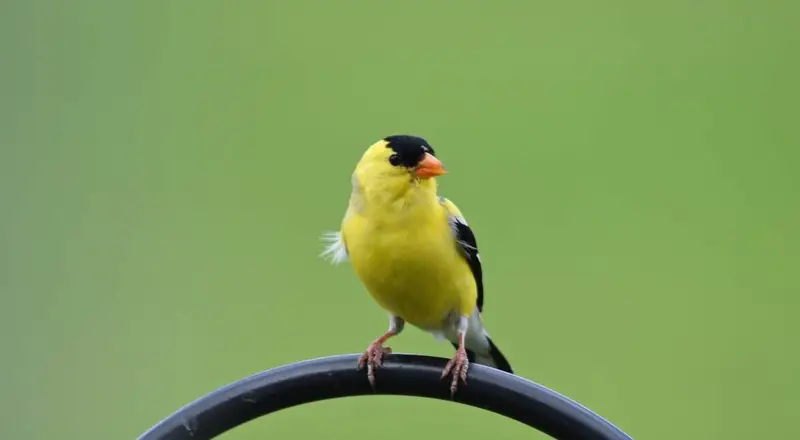
Want to learn more? This book on everything to do with Finches is a fantastic read!
House Finches are the most common of these finches to be found in Texas. They are permanent residents in the state and are high in abundance.
The north of Texas has a continental climate whilst the more southern areas are classed as having a subtropical climate. This means that in the state there are cold winters and humid summers. There are 80 different state parks across Texas and two different national parks.
One of the more popular birding spots for trying to see finches is Lost Maples State National Area. Let’s have a look at where you can find these finches and how to attract them to your homes in more detail below.
Want to attract finches? Take a look at our article!
What Finches can be seen in Texas?
Table of Contents
1. House Finch
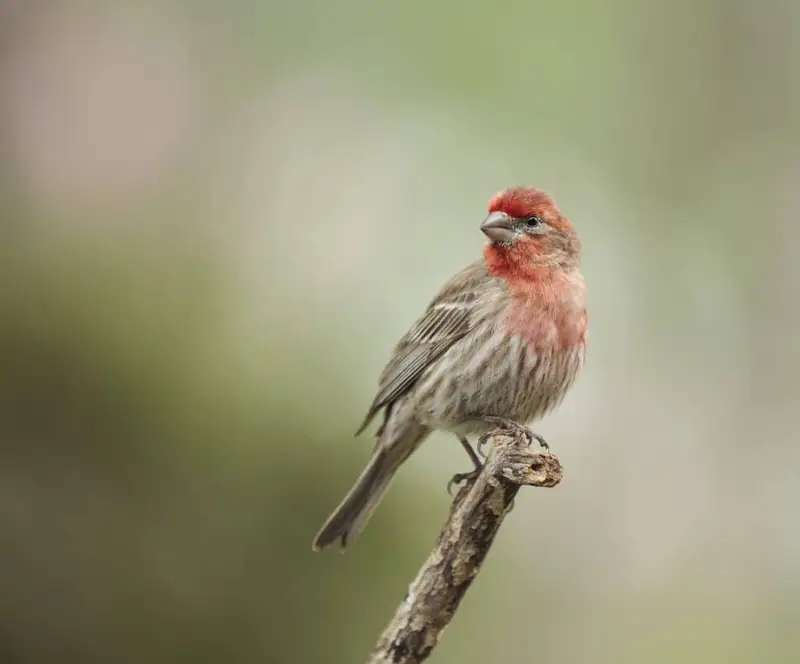
Fun Facts:
- A finch’s diet is dependent on the type of beak they have. House Finches have a seed feeding beak as seeds are their main source of food. The most popular seed for them is the black oil sunflower seed. They also eat certain types of flower buds and fruits, these incluce cherries and thistle.
- House Finches are only very small birds with a small weight range. They range from 16-27g and have only a tiny wingspan of 20-25cm.
House Finches are recognisable by the cherry red plumage that is visible on the males of the species. In contrast, females have streaky patterns of grey and brown feathers covering their bodies.
These birds prefer to perch when they eat rather than hover, for this reason they are quite avid users of human placed bird feeders.
They have also been known to feed on dropped food on the ground. These finches are very social birds and will stay in large flocks of up to 100 individuals, even outside of mating season.
House Finches can be found in Texas year-round and can be seen across the state.
They are most abundant in the western areas of the state. To attract a House Finch to your garden, have a variety of seed feeders available for them. Fill them with black oil sunflower seeds as these are one of their favoured foods.
2. Purple Finch
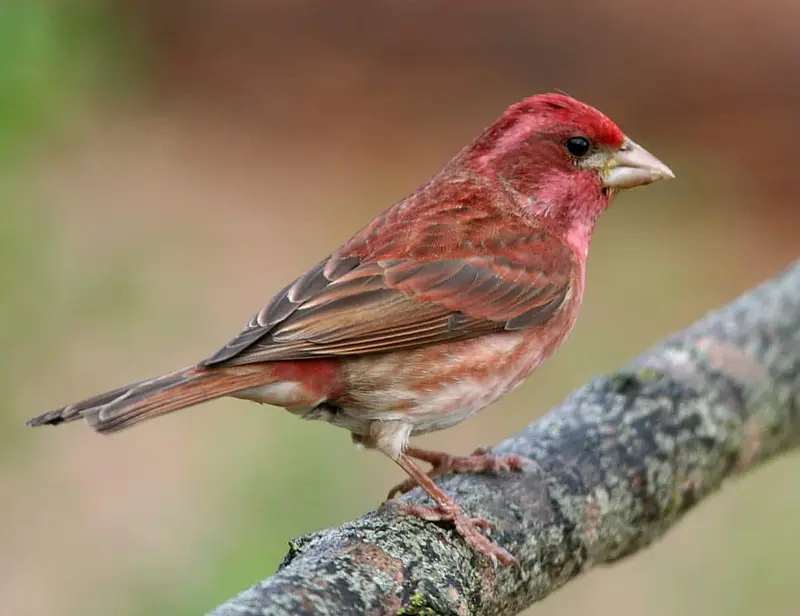
Fun Facts:
- These birds have bills that are designed for breaking different seeds open. Their favourite seeds include black oil sunflower seeds and safflower seeds. They also enjoy eating nectar and occasionally consume flower buds.
- Purple Finches weigh just slightly more than House Finches at 18-32g. They also have very small wingspans which range from 22-26cm.
The purple finch is covered in raspberry coloured feathers, it is not actually purple in colour.
Females do not have these raspberry colours like the males of the species, instead they have white bellies and brown streaky feathers going down their wings and back.
Purple finches are very territorial over their nests and food. Aggression usually comes in form of a show rather than any actual attacks, although sometimes it does escalate.
Females are usually the victors of these confrontations, they are also the ones who do most of the work when making the nests.
Breeding pairs of these finches have only been found to the north east of the state, this is usually in winter when they move south to avoid the cold winter months.
To attract these birds to your garden, place a variety of bird feeders around, using ones with perches rather than platforms.
3. American Goldfinch
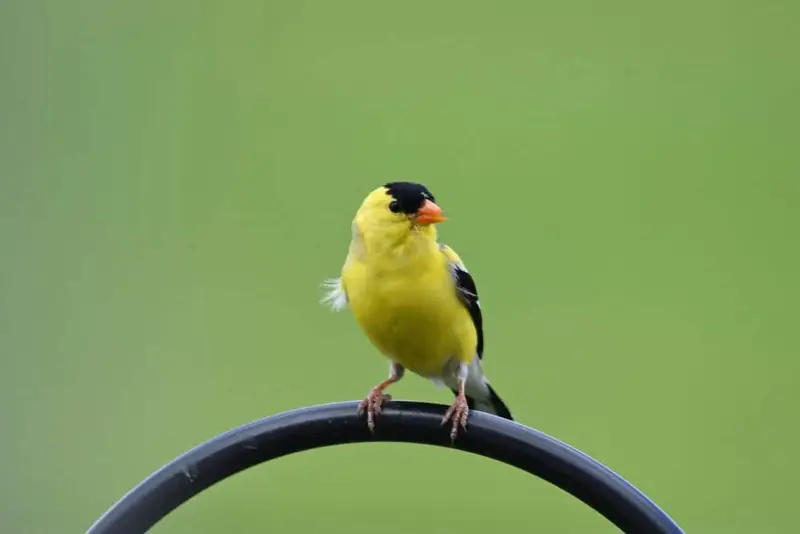
Fun Facts:
- American Goldfinches have a beak designed for eating small seeds. Nyjer seeds being a favourite of theirs. They rarely eat anything outside of the seed family.
- These finches are slightly smaller than the other finches that we’ve looked at, weighing only 11-20g. They also have a very tiny wingspan which measure 19-22cm.
In the summer, these birds have bright yellow feathers with black tipped wings. The females also have yellow, but it is a duller shade. In the winter their feathers will be browner.
The breeding pairs of this species will fly around and look for a suitable nesting spot together, but it tends to be the females who do the actual building of the nest. These finches have a unique call and it makes them sound like they are saying po-ta-to-chip.
American Goldfinches can be found year-round in Texas but are usually only in the north in breeding months.
If you want to attract one to your garden, have several seed feeders, some filled with black sunflower seeds and some filled with nyjer seeds.
4. Pine Siskin
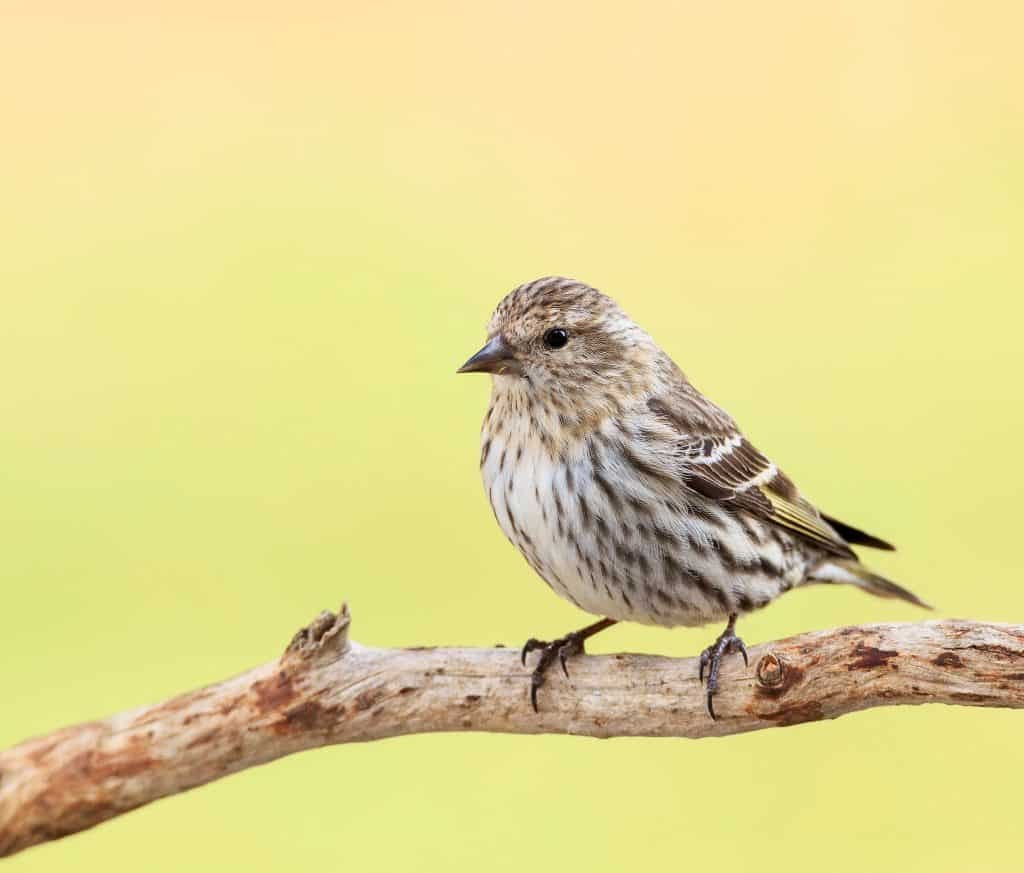
Fun Facts:
- These birds have beaks designed for eating seeds and, as the name suggests, they mostly eat seeds from the pine family. As well as seeds, they have also been known to forage for small insects, these insects are usually aphids.
- Pine Siskins are very similar in size to the American Goldfinch, weighing in at a range of 12-18g. Like other finches, they also have small wingspans of 18-22cm.
Pine Siskins are known for their streaky feather patterns and small bills. To court a female, males will sit on high perches to perform their unique courting songs.
Pine Siskins stay in loosely structured colonies that stay together even during the mating season.
They usually only tend to get aggressive with one another during the winter months, this is usually over a food source as it is scarce in these times.
Pine Siskins can be found across the whole state of Texas, usually it is outside of the breeding seasons. You are most likely to find one in your garden during the winter when food is scarce and they rely more on humans.
Place a variety of seed feeders in your garden with different seeds if you hope to see this bird, pine seeds are some of the most effective at luring them.
5. Cassin’s Finch
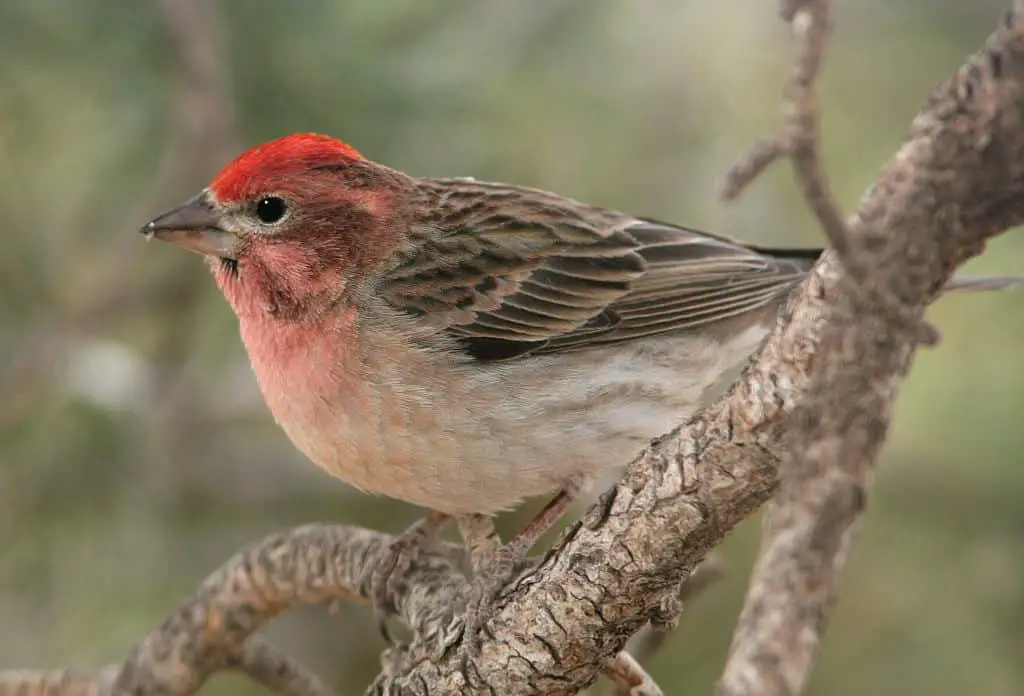
Fun Facts:
- These birds primarily feed on seeds, however they do eat insects when they are available.
- These finches are slightly larger than the others, weighing in at 24-34g.
Males of this species have light red heads and plumages, their wings and backs are covered with brown feathers. Females of this species have white and brown streaky feathers covering their bodies.
During the mating season, the females will pick a spot to make the nest and whilst she is doing this the male will fight off any other males that try to come into their territory.
They are very social when it is not the mating season and will join other species of foraging finches, helping each other to find food.
These finches are less common in Texas than the others we have looked at and are only found in the small western regions of the state.
They are in Texas for most of the year, usually only leaving in April or May for their breeding seasons.
You are more likely to see one of these birds in your garden during the winter, so when the colder months start to hit, place a variety of seed feeders outside.
They particularly like sunflower seeds. They will also feed on certain fruit shrubs that may be in your garden.
6. Common Redpoll
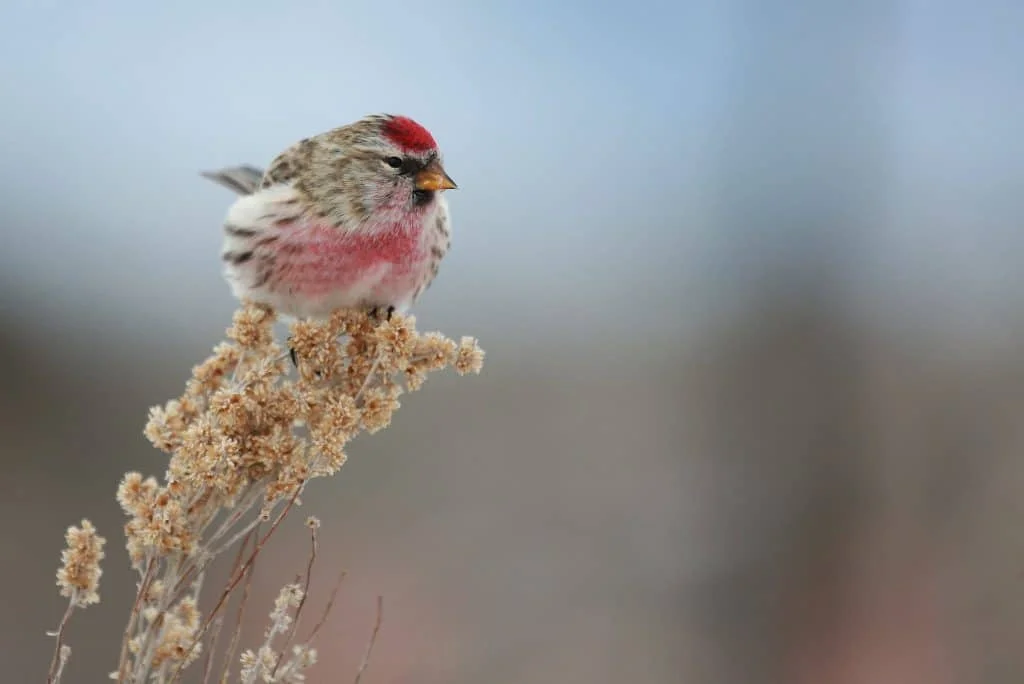
Fun Facts:
- These birds only have very small bills meaning they can only eat tiny seeds.
- They are average sized for a finch, weighing 11-20g.
The Common Redpoll has a frosty red plumage and a speck of red feathers on the top of its head. Females also have the red on their head but not on their plumage.
During nesting season, the females will be the ones to choose a spot to build their nest and they will also do most of the work building it. They will use materials such as grass and twigs, as well as sometimes taking pieces from other nests.
These finches have a courtship ritual which begins with the males flying in slow circles around the females and calling to them.
These finches are not very common in Texas and can only be found during the winter months in the most northern parts of the state.
They will move to Texas to deal with the colder months of the year and this is when you are most likely to find them in your garden.
If you want to attract them to your garden, you need to make sure you have seed feeders which can hold very small seeds. Their favourite seed to eat is Nyjer seeds.
7. Red Crossbill
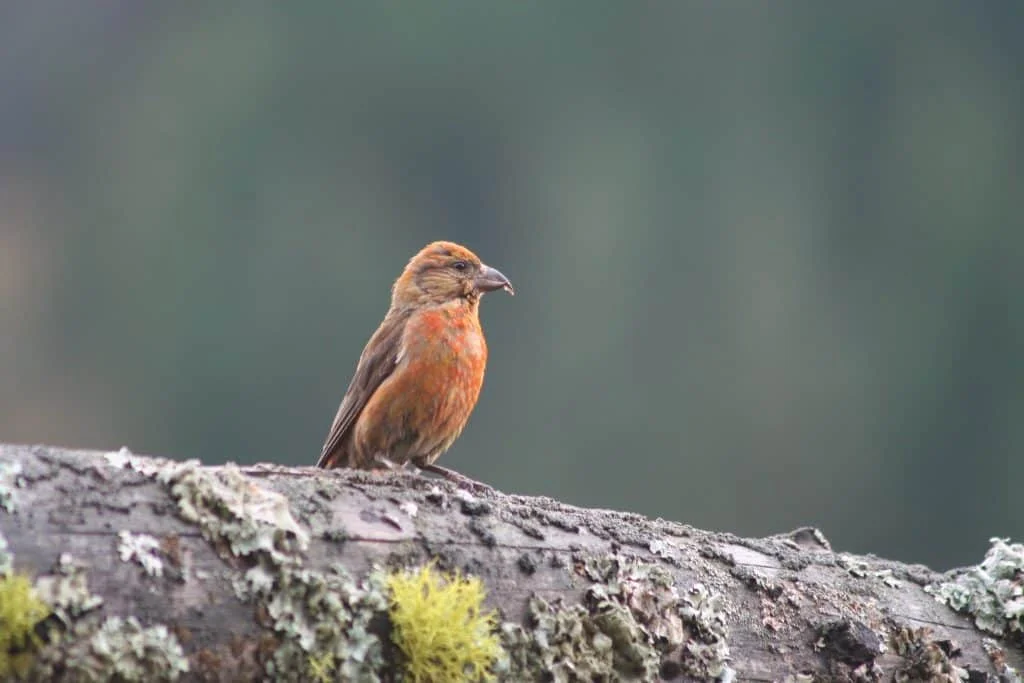
Fun Facts:
- The Red Crossbills mostly feed on seeds, particularly pine seeds. During the summer they will also sometimes eat insects.
- Due to their varied and unstudied sizes, there is no average weight range for this bird.
The Red Crossbill is covered in red feathers and have a bill which crosses over. These birds are very social, staying in large groups even during the mating season.
Breeding pairs will make their nests close to other breeding pairs of the species. Red Crossbills are monogamous, but it is not known whether they return to the same mate every year.
Red Crossbills are seen in Texas outside of their breeding season and they are found to the north and to the west of the state.
You will be very lucky if you attract one to your garden, but if you want to try and do so, use seed feeders filled with pine seeds. They are most likely to visit in winter when food is less abundant.
8. Lesser Goldfinch
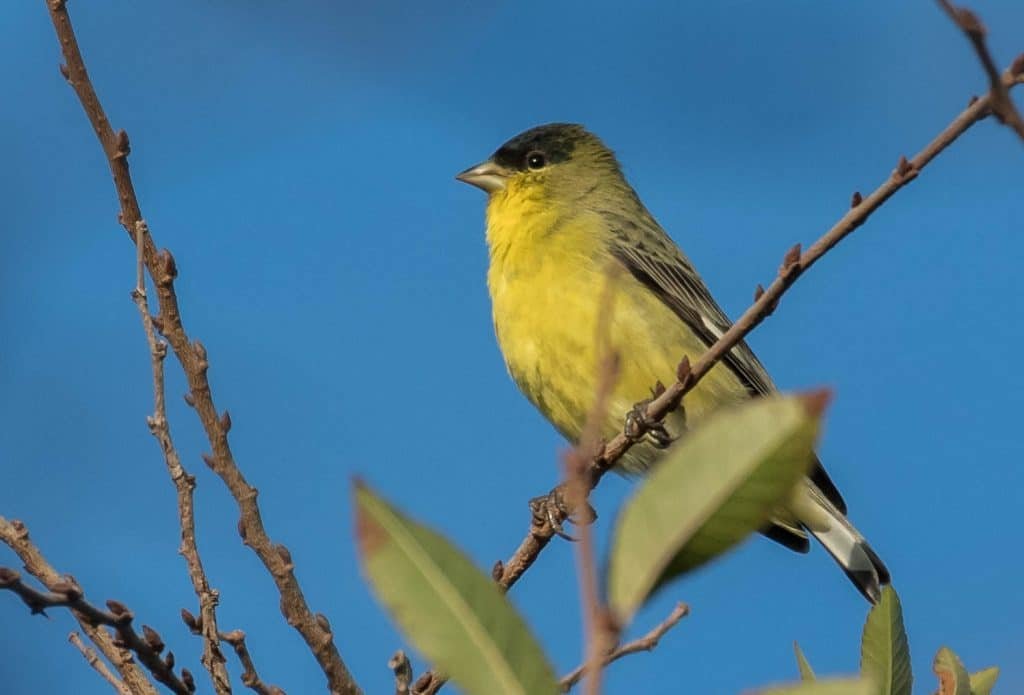
Fun Facts:
- These finches mostly eat seeds however they will also consume fruit from time to time, such as elderberries. In summer they will also eat certain types of flowers.
- These finches are the smallest of the species that we have previously looked at, they weigh only 8-11.5g with a wingspan of 15-20cm.
These finches have bright yellow bellies and brown feathers on their wings and backs.
These finches prefer to hover whilst feeding rather than perching. During the mating season, males will first establish their territories before inviting a female to join them.
Once they have found a territory, they will perform a courting song to attract a female, after the female has approached they will chase each other in flight.
Finches are found in Texas year-round, during the breeding seasons they are in the more central areas of the state whilst outside of the breeding season they are found more to the south.
These birds are easy to bring to your garden and will often accompany other species.
You are likely to attract these birds by placing a variety of seed feeders in your garden. They enjoy sunflower seeds and nyjer seeds.

More Articles.
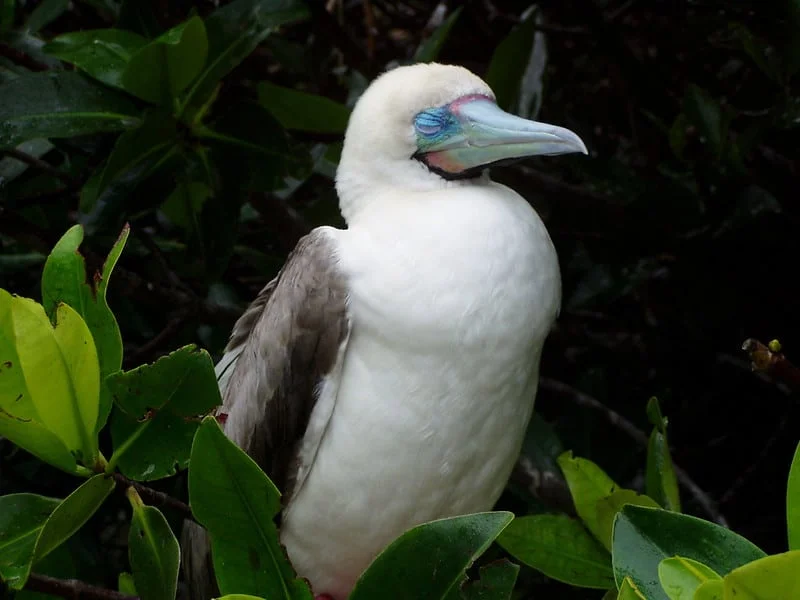
North American Birds with a White Breast (18 Species with Pictures and Sounds)
Canada and America are filled with many wonderful birds with a white breast – in
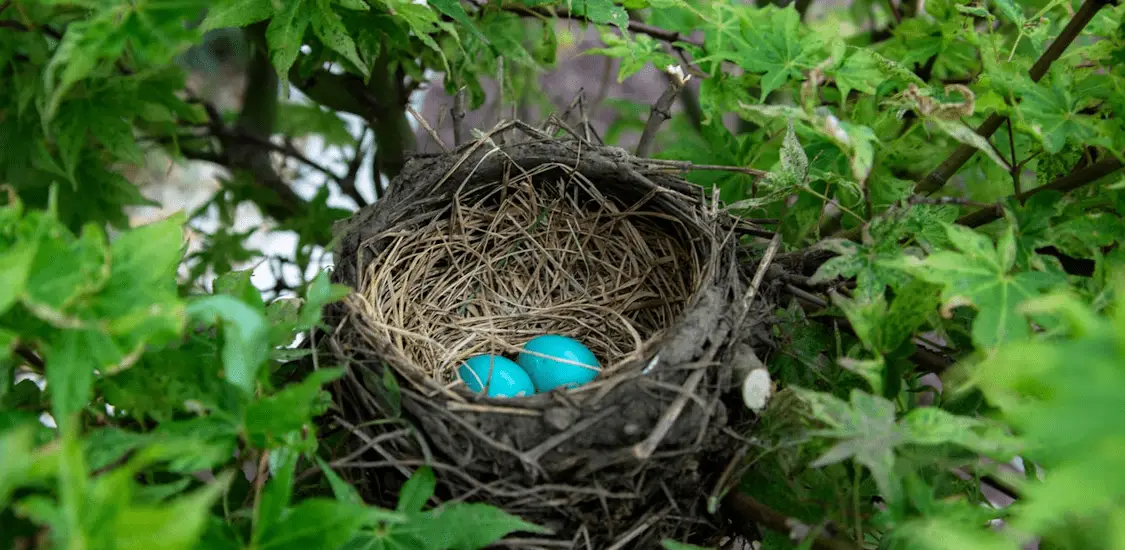
How to safely remove a birds nests?
First ensure that it is legal to remove the birds nests. An empty and abandoned
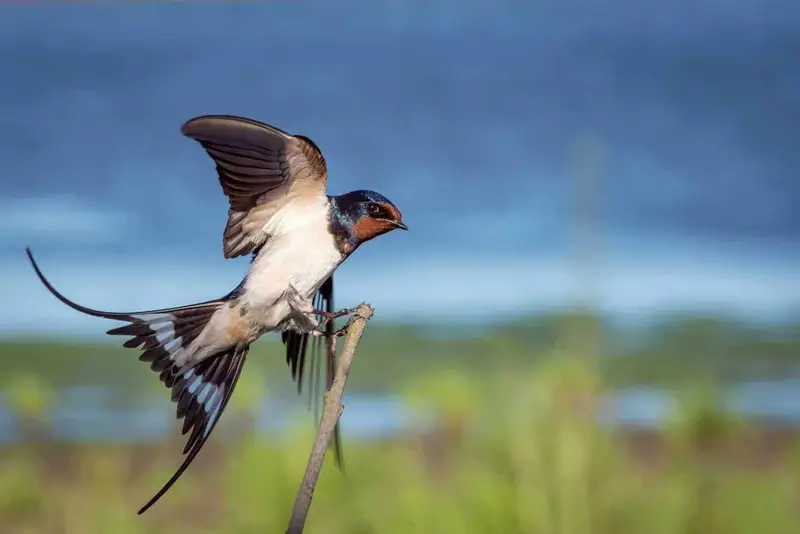
How to Attract Swallows to your Yard?
Even though swallows are absolutely beautiful birds, there is simply no denying the fact that

About Us
We are avid bird-watchers who recently retired, allowing us more time to travel the world. Fortunately, we have managed to visit numerous countries around Europe, Asia, and America. Watching and photographing birds has been a passion for many years and we are making the most of the extra time on our hands!
